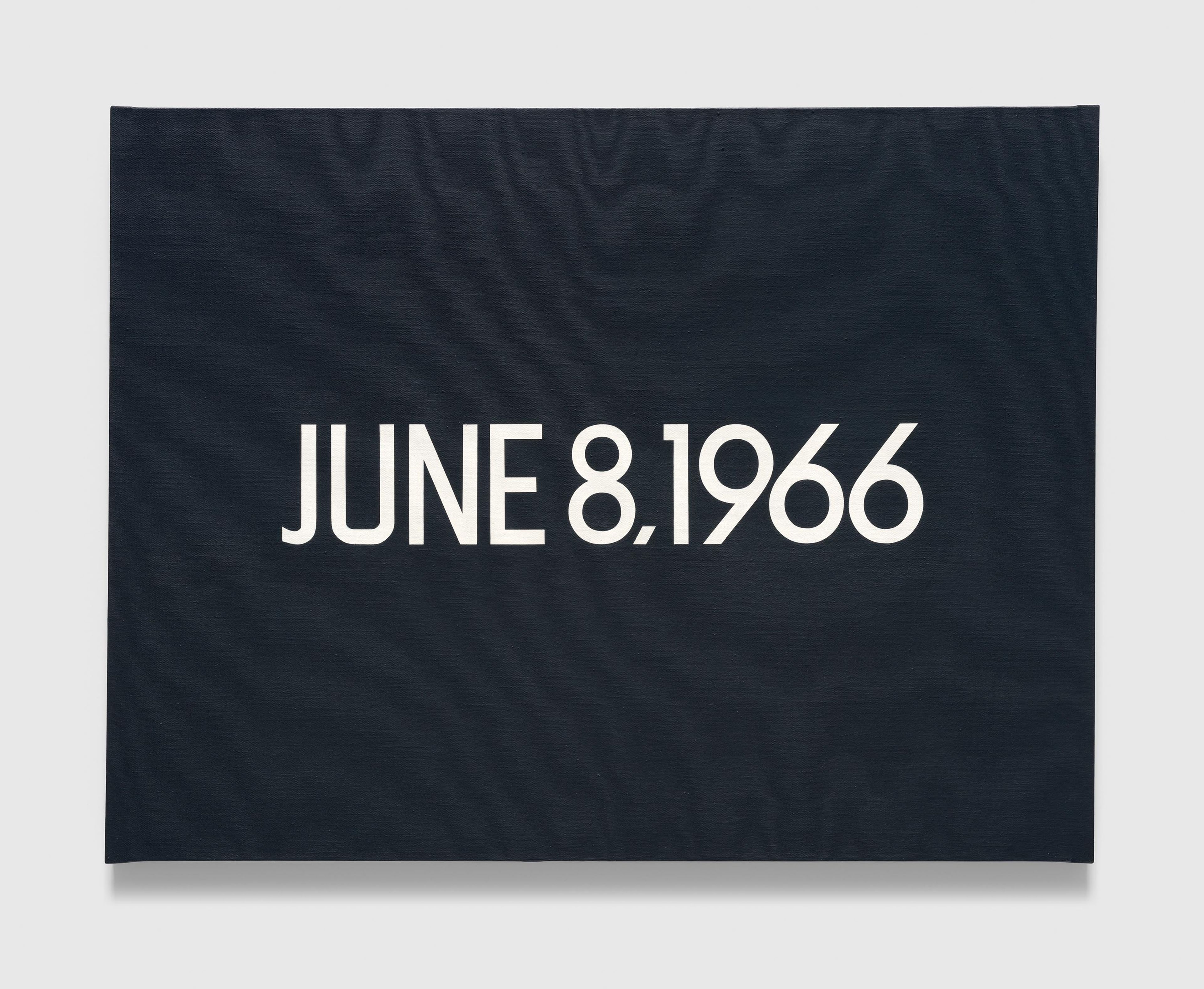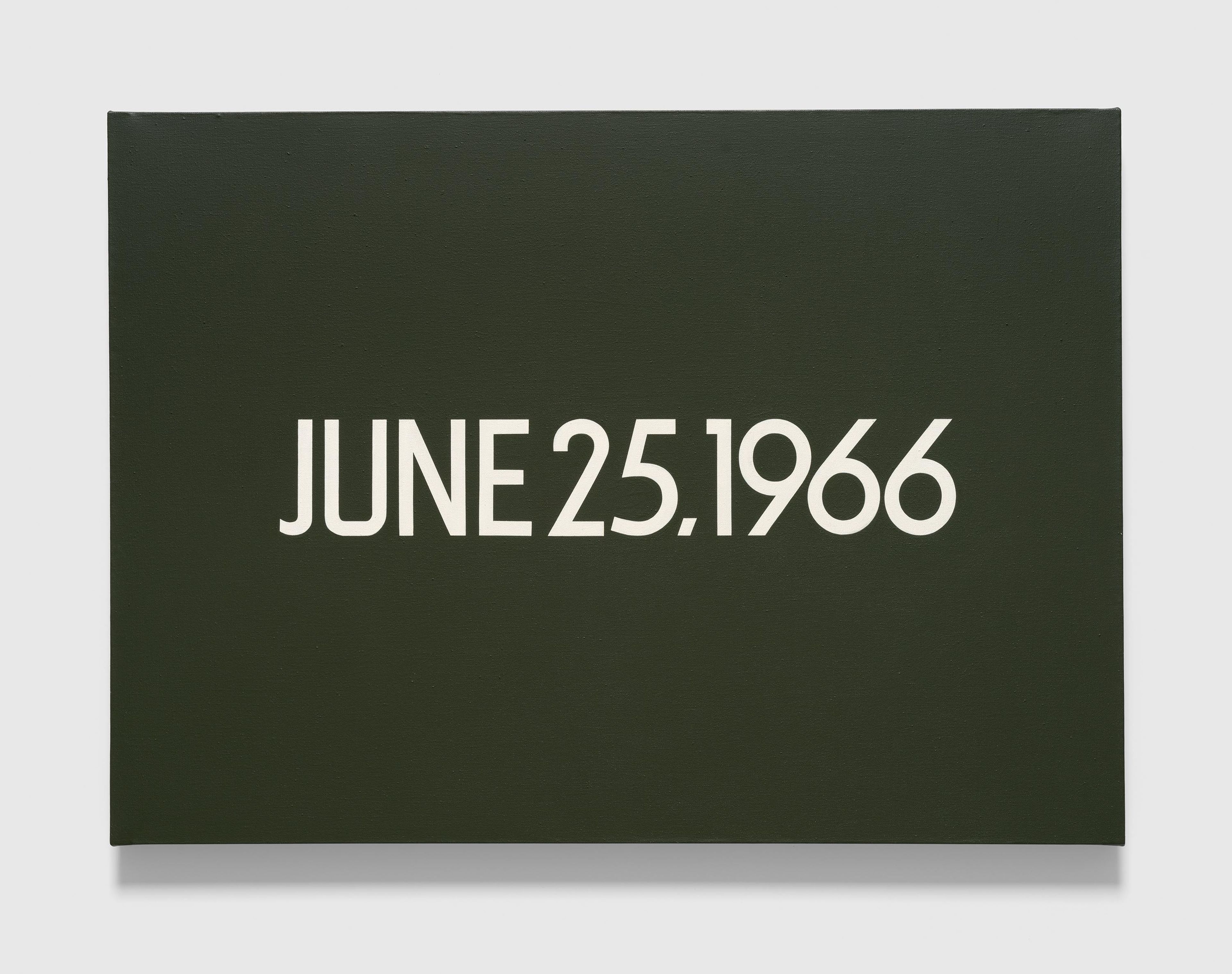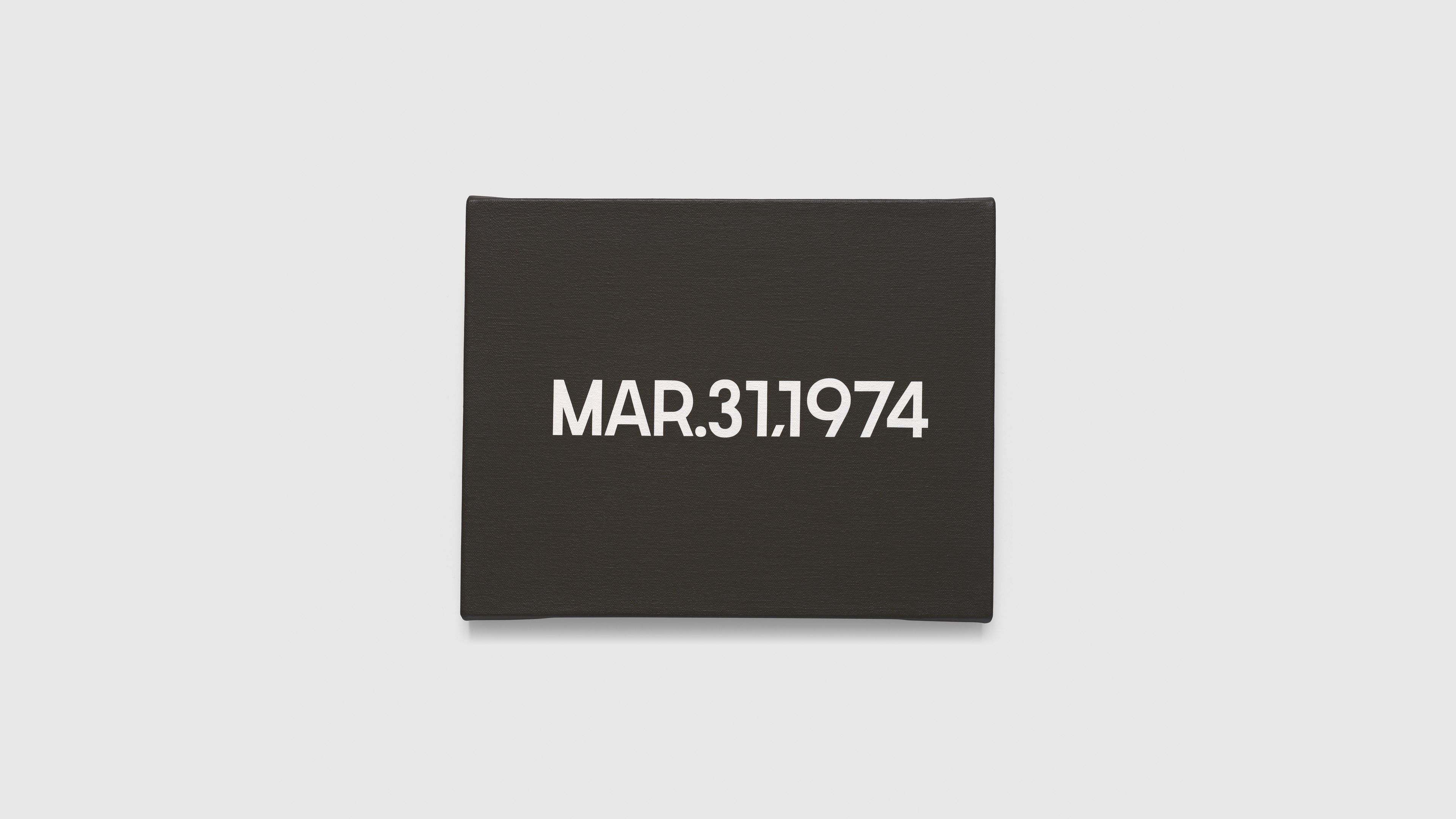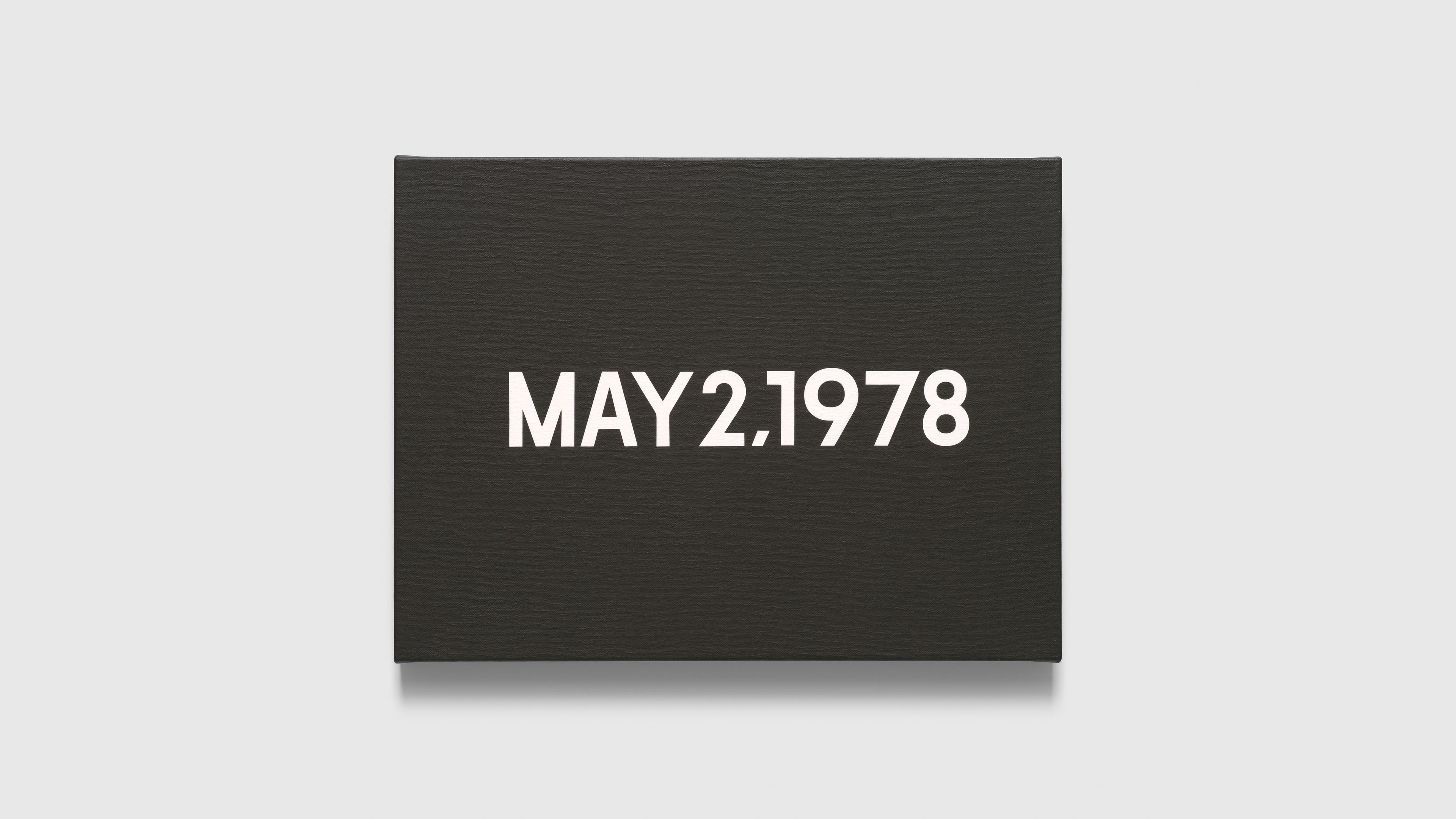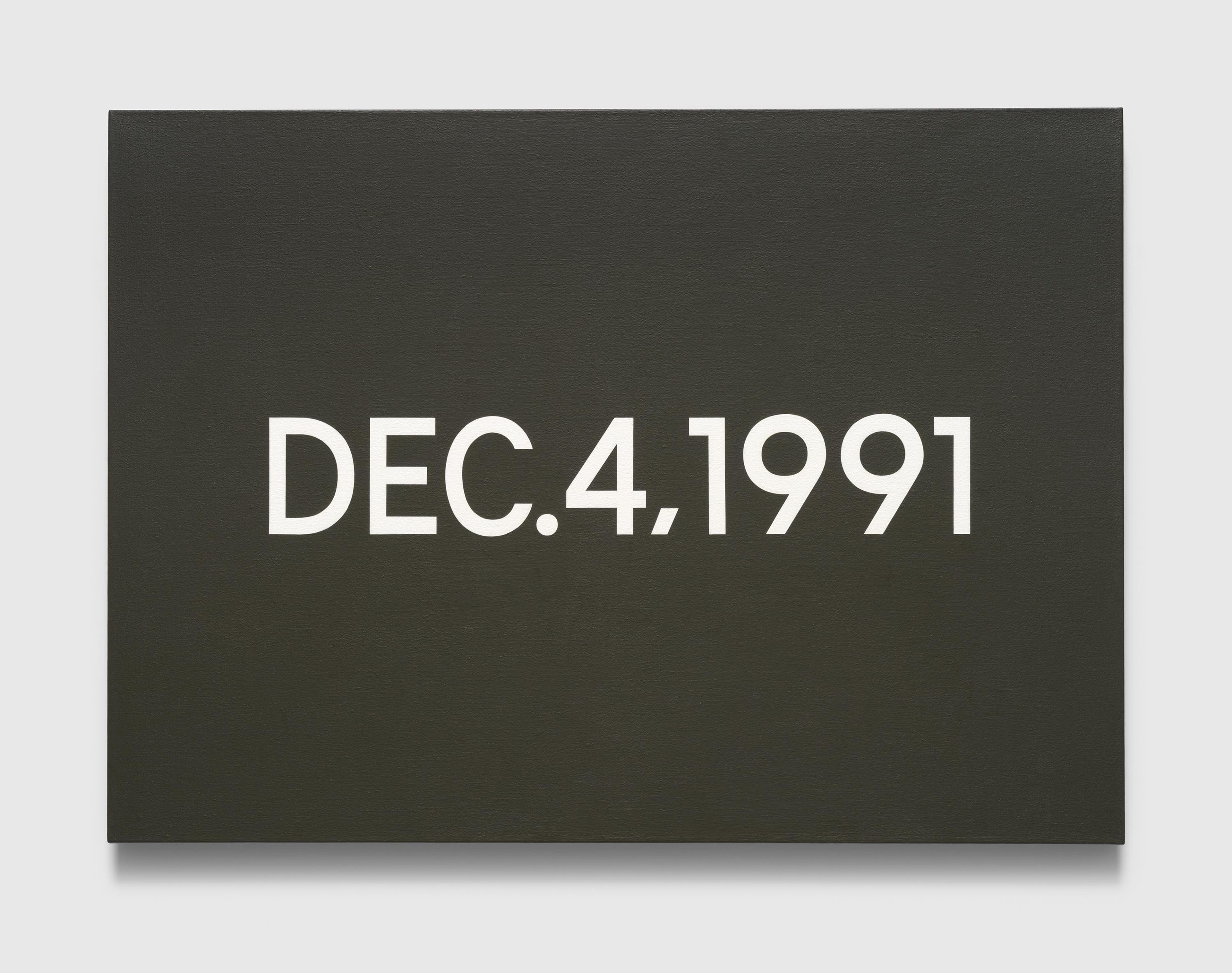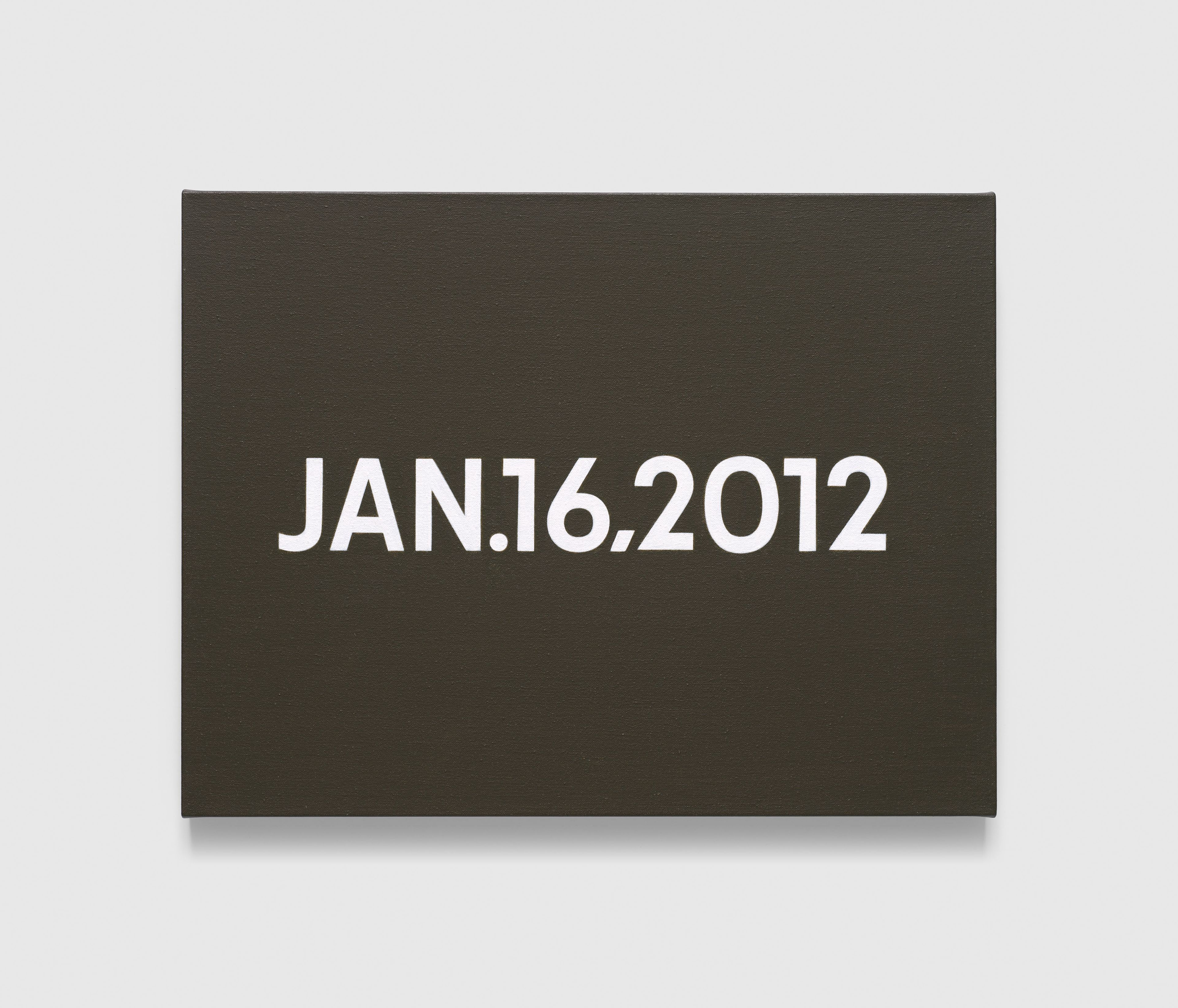On Kawara: Date Paintings

Installation view, On Kawara: Date Paintings, David Zwirner, London, 2024
Past
November 21, 2024—January 25, 2025
Opening Reception
Thursday, November 21, 6–8 PM
Opening Reception
Thursday, November 21, 6–8 PM
Location
London
24 Grafton Street
London W1S 4EZ
Tue, Wed, Thu, Fri, Sat: 10 AM-6 PM
Artist
Explore

On Kawara’s studio, New York, 1966. © One Million Years Foundation
“On the one hand, the painting attempts to hold, or seize, a given day. It represents the day on which it was made, and if it’s not finished by the time the day comes to an end, it is destroyed. On the other hand, of course, the day itself is something that has already passed by the time the painting is experienced by us. Time can’t be stopped.”
—Jeffrey Weiss, curator, 2015

Installation view, On Kawara: Date Paintings, David Zwirner, London, 2024

On Kawara’s studio, New York, 1966. © One Million Years Foundation
Kawara began his signature Today series on January 4, 1966, in New York City and continued to make these works in different parts of the world until 2013.
Deceptively simple, each composition—which consists of a calendar date rendered against a monochromatic ground in a distinctive sans serif typeface created by the artist—is the result of an established method and series of decisions that are at once highly ordered and responsive to different situations. Each of the paintings conforms to one of eight standard sizes and was carefully executed by hand on the date documented on the canvas. If the work was not completed by midnight, the canvas would be destroyed.
“Everyday or epic? Cosmic or mundane? Kawara’s date paintings are both—a perpetual abstraction, but also a system of self-portraits; a calendar, but also a diary; dates, but also days. It’s that indeterminacy, that constant oscillation between the quotidian and the universal, that gives his reticent art such force.”
—Jason Farago, critic, 2015

A flooded road at Lake Ella in Tallahassee following Hurricane Alma in 1966. Photo by Ellis Finch
Many of the Date Paintings have subtitles that include details pertaining to that day, such as personal anecdotes or current events. The subtitle of JUNE 8, 1966 states, “Hurricane Alma has mounted to 100-mile-an-hour peak winds and is moving toward Cuba.”

Installation view, On Kawara: Date Paintings, David Zwirner, London, 2024

On Kawara’s studio, New York, 1966. © One Million Years Foundation

Process of Date Painting, 5. SEPT. 1994, Dusseldorf. © One Million Years Foundation
As part of his process, Kawara would mix the color for each individual composition, meticulously overlaying the date in white lettering in the language and grammatical conventions of the country in which it is made (the artist substituted Esperanto when the primary language of the country he was in did not use the Roman alphabet). The syntax of the paintings thus emerges as a code to be deciphered, evoking specific locations and subtly reflecting the regional differences that exist despite the universality of time.
“If viewers found abstract ideas about life, death, mobility, and communication more comprehensible after experiencing one of Kawara’s works,” Joan Kee writes in Artforum, “this response had as much to do with his materials and the forms those materials eventually took as with the information he conveyed…. Kawara’s canvases evince his pointed devotion to the medium in which they were created.... A sequence of photographs that breaks down the production of one of Kawara’s paintings into a step-by-step process of interaction between paint, brush, knife, and canvas. The images are especially remarkable for so clearly illuminating the works’ curious tension between meaning and materiality.”
“The measurement of time and its intersection with space provides the basis of Kawara's project, while the everyday provides apparently endless—but seldom surprising—variations, constantly shot through with movement while remaining more or less the same, like a running bassline in music.”
—Stuart Morgan, critic, 1997

Installation view, On Kawara: Date Paintings, David Zwirner, London, 2024

On Kawara’s hotel room, Jackson, Mississippi, 1975. © One Million Years Foundation
Frequently working in hotel rooms while traveling, Kawara made Date Paintings in over a hundred cities in more than thirty countries. The global dimension of the Today series is further evidenced by the newspapers accompanying many of the works.
When not on display, the paintings are encased in a cardboard box handmade by the artist. Beginning in 1967, Kawara would often select a local newspaper clipping from that day to line the interior of the box. While the artist did not make a painting every day, he would occasionally execute two, or even three, paintings on a given day.

30 ABR. 68, 1968, from "Today," 1966-2013

Former astronaut Charles "Pete" Conrad waves as he and Richard Gordon, centre, and Alan Bean leave to the launch pad for their Apollo 12 moon flight in November 1969. Photo credit: Associated Press
The subtitle for NOV. 13. 1969 states, “Three American astronauts were ready tonight to embark tomorrow on man's second voyage to land on the moon, a trip aimed at a more thorough scientific investigation into the origin and nature of the earth's only natural satellite.”
“[On Kawara] regard[ed] the process of making the date paintings as a form of meditation, a routine conducive to the loss of ego and distractions from fundamental truths.... The date is about time, and surely and ultimately about human mortality.”
—Jonathan Watkins, curator and writer, 2002

On Kawara’s studio, Greene Street, New York, 1979. © Estate of Shigeo Anzaï. Courtesy of Zeit-Foto
“The seemingly dry, narrow-gauge art of the Conceptual giant On Kawara is profound—profoundly simple, human and deep…. It gives you time as local, global and cosmic; as solitude, relationship and motion through space … [in] adamantly visual ways.”
—Roberta Smith, critic, 2015
“Kawara's dedication ... reveals the pattern that can be discerned within the entire plan. The quotidian may be undramatic, but it is all we have. Kawara invites us to meditate on it and with it creates great, unheard symphonies.”
—Stuart Morgan, critic, 1997

Installation view, On Kawara: Date Paintings, David Zwirner, London, 2024

On Kawara: Early Works



